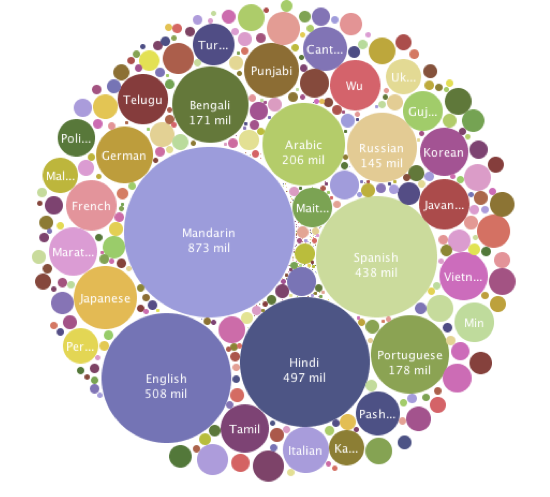As soon as we solve the 6000 languages problem
When a highly reputable publication announces “Almost two-thirds of the human population is connected to the internet by smartphones,” it signals how much math education has fallen short, not to mention the confusion between smartphones sold and unique smartphone users. The estimate, which implies over 5 billion users, is not even close. The actual number is about 2 billion.
Connecting 3 more billion is likely to take another 10 to 20 years, if smartphones match the diffusion pace of mobile phones. Even this unrealistic projection (see below) would leave 2.5 billion individuals without smartphones, based on today’s population. So why is the smartphone still not in the hands of 5.5 billion today—or 4.5 billion if we deduct a billion as being underage, remembering that a quarter of the under-12s in China already do have smartphones?
Based on our work in Africa, Asia and Latin America, we think it’s three things mainly—the language gap, the income gap, and the recharging gap. On languages, we think everyone speaks English—or else Mandarin or Spanish—but the native speakers of these three languages amount to only 1.5 billion and many of these don’t read or write. Yet 80% of internet sites are in 10 languages (more than half in English), leaving a mismatch between content and the ability to access and absorb it.
So how can smartphones accommodate our 6000 languages—or at least the 200 or so (see below) with 10 million or more speakers?

Over time algorithms and oral interfaces can solve the issue, as companies like Facebook, Google and Amazon have started to show. What’s not clear is how rapidly the solutions will come. The current focus on the top-40 languages, for example, leaves out all but one of Africa’s 2000 languages. This helps explain why music, photos and videos—and not internet searches—are so popular among non-English speakers around the world. And why less than 5% of non-English speakers in Africa have a smartphone (PEW Research).
A more obvious barrier to smartphone adoption is that more than two-thirds of us live on $10 or less per day. Mobiles, which are available for under $30 in some poor countries, with airtime being sold a few minutes at a time, are affordable for most people, especially if giving up cigarettes, beer or lipstick is part of the deal. Smartphones, even when they fall below $100, are generally not affordable—even more so for the three billion, roughly, living under $5.00 per day.
This brings up recharging, with about 1.2 billion of the world’s population living off the power grid. This has slowed down mobile adoption in these mostly rural areas but not shut it off. Only it is one thing to ask people to walk 10 km or more to the nearest town to recharge their phones once a week, and an entirely different thing to expect them to do it every day or two, which active smartphone use calls for. New battery technologies and power-conserving approaches are promising but remain to be proven.
Meanwhile, the grid-based population grows each year but only minutely—about 15 million per year. On this basis it could take 80 years to fully close the recharging gap. Solar panels and services like M-KOPA in Kenya can help as well but so far they are diffusing more slowly than are extensions of the grid, themselves proceeding like escargots. Meanwhile, we hear of ambitious projects to launch free WiFi in public areas. These projects should add free recharging stations.